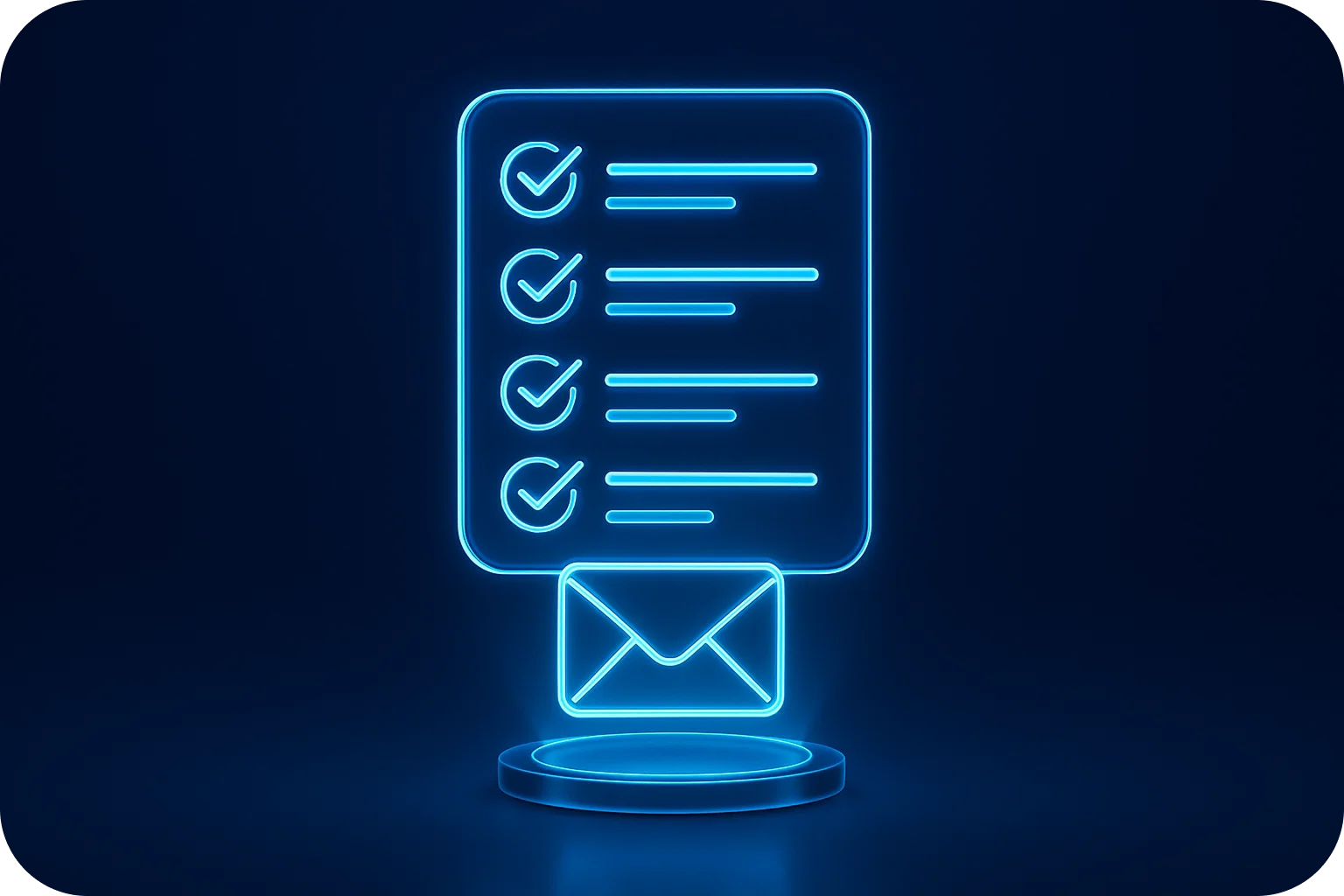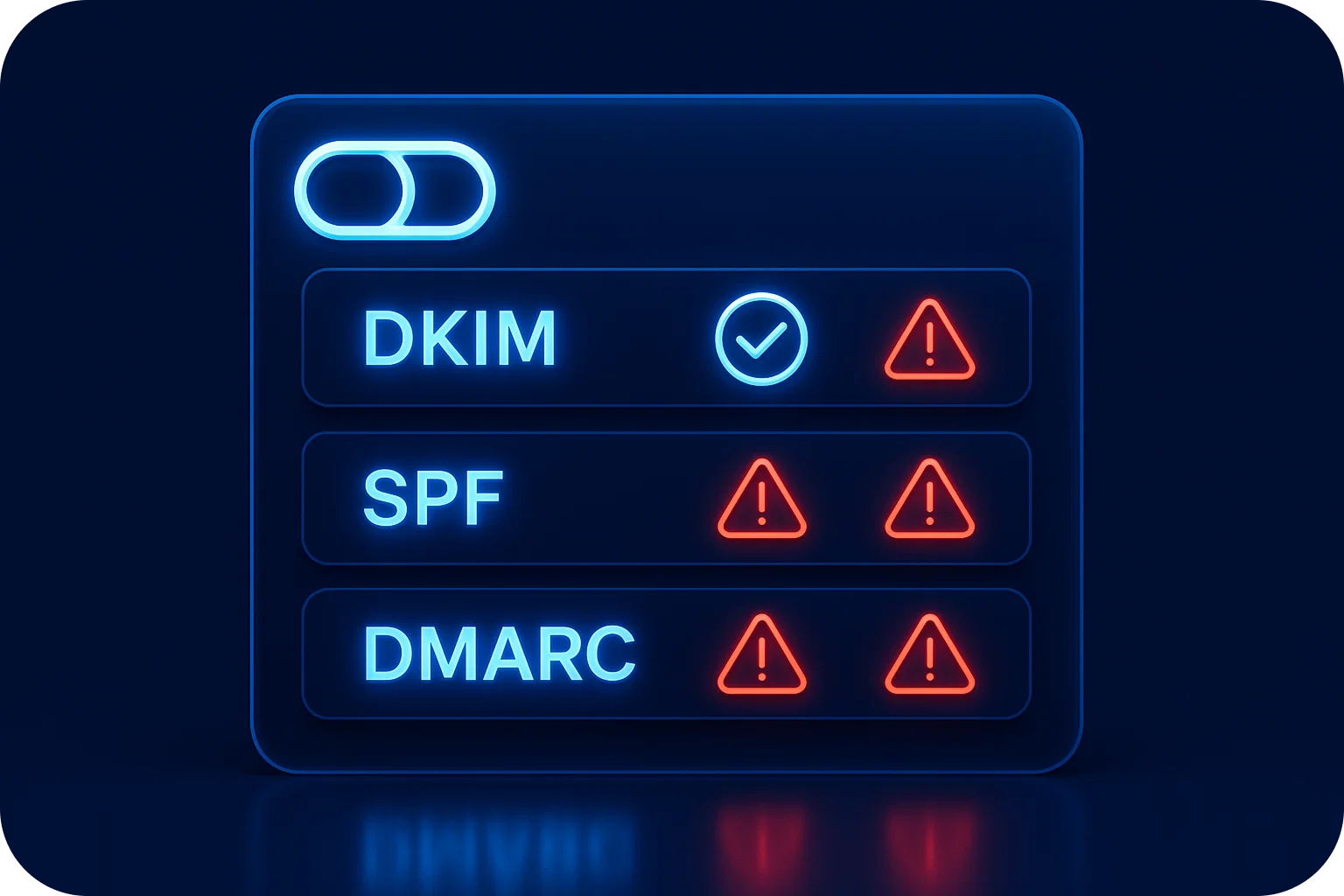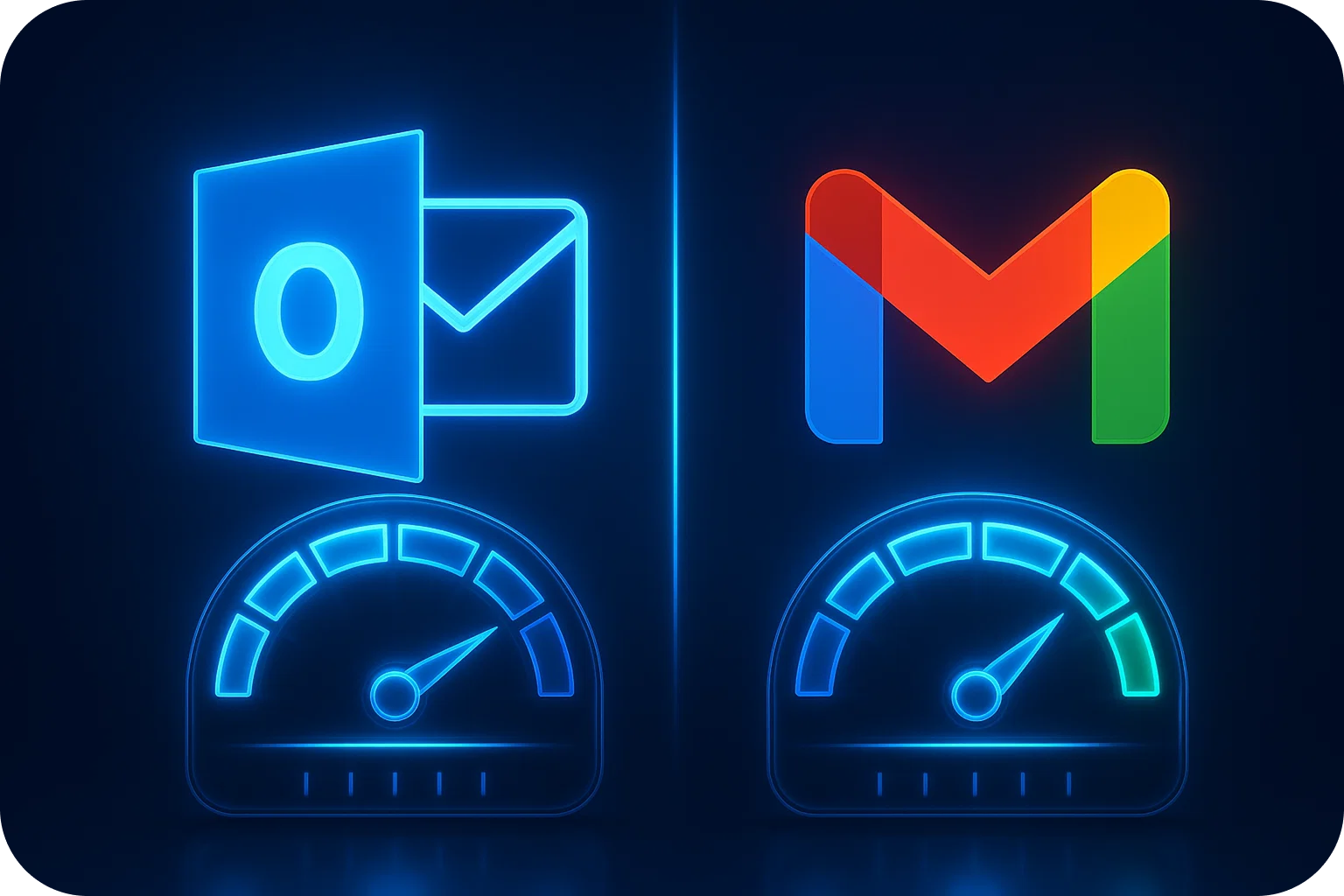Why Your Cold Emails Land in Spam (And 7 Ways to Fix It Today)
.png)
You've crafted the perfect cold email. Your value proposition is clear, your CTA is compelling, and your targeting is spot-on. You hit send on 500 emails, expecting a flood of replies.
Instead? Crickets.
The harsh reality: your emails probably never reached the inbox. They're sitting in spam folders, invisible to your prospects and killing your outreach ROI.
If your cold email campaigns are underperforming, spam placement is likely the culprit. The good news? Most deliverability issues are fixable with the right knowledge and tools. Let's dive into why your emails land in spam and seven actionable fixes you can implement today.
Why Cold Emails End Up in Spam
Email service providers like Gmail, Outlook, and Yahoo use sophisticated algorithms to protect users from unwanted messages. These filters evaluate hundreds of signals to determine whether your email deserves inbox placement or should be quarantined in spam.
The most common reasons cold emails get flagged include:
- Poor sender reputation: Your domain or IP address has a history of spam complaints or low engagement
- Missing or incorrect authentication: SPF, DKIM, and DMARC records aren't properly configured
- Spammy content triggers: Your email copy contains red-flag words or formatting
- Low engagement rates: Recipients rarely open, click, or reply to your emails
- High volume from new domains: Sending large quantities of email from unwarmed domains
- Blacklist presence: Your sending infrastructure appears on spam databases
- Technical configuration issues: DNS records, reverse DNS, or infrastructure problems
Understanding these factors is the first step. Now let's fix them.
7 Ways to Fix Your Cold Email Deliverability Today
1. Properly Authenticate Your Sending Domain
Email authentication is non-negotiable in 2025. Without proper SPF, DKIM, and DMARC records, email providers will automatically distrust your messages.
What to do:
- Set up SPF records to authorize which servers can send email from your domain
- Configure DKIM to add a digital signature that proves email authenticity
- Implement DMARC to tell receiving servers how to handle authentication failures
- Add a custom tracking domain to avoid shared domain reputation issues
Quick win: Use your DNS provider's interface to add these records, or leverage an email infrastructure platform that automates authentication setup. Proper authentication can improve inbox placement by 20-30% immediately.
2. Warm Up Your Email Accounts Before Sending at Scale
Sending 100 cold emails per day from a brand-new email account is a guaranteed ticket to the spam folder. Email providers view sudden high-volume sending from new accounts as suspicious behavior.
What to do:
- Start with 5-10 emails per day from new accounts
- Gradually increase volume by 5-10 emails daily over 3-4 weeks
- Engage in two-way conversations to build positive engagement signals
- Use automated warm-up tools that simulate natural email activity
Best practice: Never exceed 50-100 emails per inbox per day, even after warming up. The recommended sweet spot is 20 emails per inbox daily for optimal deliverability. Distribute your sending across multiple inboxes and domains to scale without triggering spam filters.
3. Monitor and Improve Your Sender Reputation
Your sender reputation is like a credit score for email. It's determined by engagement rates, spam complaints, bounce rates, and sending patterns. A poor reputation means automatic spam placement.
What to do:
- Check your domain reputation using tools like Google Postmaster Tools and Microsoft SNDS
- Monitor your IP reputation if using dedicated IPs
- Keep bounce rates below 5% by regularly cleaning your email lists
- Aim for spam complaint rates below 0.1%
- Track engagement metrics and adjust targeting to improve open and reply rates
Pro tip: If your domain reputation is damaged, consider using a separate subdomain for cold outreach while you rebuild your primary domain's reputation.
4. Optimize Your Email Content and Formatting
Even with a perfect technical setup, spammy content will get you filtered. Modern spam filters analyze your subject lines, body copy, links, and formatting patterns.
What to avoid:
- ALL CAPS subject lines or excessive punctuation!!!
- Spam trigger words like "free," "guarantee," "act now," "limited time"
- Too many links (stick to 1-2 maximum)
- Large images or attachments in initial outreach
- Overly promotional or sales-heavy language
- HTML-heavy templates that look like marketing emails
What to do instead:
- Write conversational, personalized copy that sounds human
- Use plain text or minimal HTML formatting
- Keep emails short (50-125 words is ideal)
- Include one clear, specific call-to-action
- Personalize beyond just first names—reference specific details about their company or role
5. Segment Your Lists and Improve Targeting
Sending irrelevant emails to uninterested recipients tanks your engagement rates, which destroys your sender reputation and inbox placement.
What to do:
- Segment your prospect lists by industry, company size, role, and pain points
- Research prospects before adding them to campaigns
- Verify email addresses to reduce bounce rates
- Create targeted messaging for each segment
- Remove unengaged contacts after 3-4 touchpoints with no response
Impact: Better targeting typically improves reply rates by 2-5x, which signals to email providers that your messages are wanted and valuable.
6. Use Multiple Domains and Inboxes to Scale Safely
Relying on a single domain and inbox for cold outreach is risky. If that domain gets flagged or blacklisted, your entire outreach operation stops.
What to do:
- Use 3-5 email accounts per domain to distribute sending volume
- Set up multiple domains (subdomains or separate domains) for outreach
- Rotate sending across inboxes to stay under daily limits
- Keep your primary business domain separate from cold outreach domains
- Monitor each domain's reputation independently
Scaling formula: To send 300 emails per day safely, use 3 domains with 5 inboxes each (15 total inboxes), sending 20 emails per inbox daily. This approach maintains high deliverability while scaling your outreach 100x.
7. Implement Continuous Monitoring and Testing
Email deliverability isn't a set-it-and-forget-it task. Spam filters constantly evolve, and your sender reputation fluctuates based on campaign performance.
What to do:
- Run regular inbox placement tests to see where your emails land
- Monitor key metrics: open rates, reply rates, bounce rates, spam complaint rates
- Test different subject lines, content, and sending patterns
- Check blacklists weekly to catch issues early
- Set up alerts for sudden drops in deliverability metrics
- A/B test email variations to identify what resonates with your audience
Benchmark targets: Aim for 96-98% inbox placement rates, 30-50% open rates, and 5-10% reply rates for well-targeted cold email campaigns.
The Technical Foundation Matters
While content and strategy are important, your underlying email infrastructure is the foundation of deliverability. Many sales teams struggle because they're trying to run enterprise-scale outreach on infrastructure designed for transactional emails.
Key infrastructure considerations:
- Email provider choice: Google Workspace and Microsoft 365 generally have better deliverability than shared IP providers
- IP reputation: Dedicated IPs give you control but require careful management; shared IPs are easier, but you share reputation with others
- DNS configuration: Proper DNS setup, including SPF, DKIM, DMARC, and reverse DNS is essential
- Automation integration: Your infrastructure should integrate seamlessly with your outreach tools
- Scalability: Can you easily add domains and inboxes as your outreach grows?
Moving Forward: From Spam to Inbox
Fixing cold email deliverability isn't about finding one magic trick, it's about implementing a comprehensive system that addresses technical setup, content quality, sending behavior, and continuous optimization.
Start with these seven fixes today:
- Authenticate your domains with SPF, DKIM, and DMARC
- Warm up new email accounts gradually over 3-4 weeks
- Monitor and protect your sender reputation
- Write human, conversational email copy that avoids spam triggers
- Segment your lists and improve targeting precision
- Scale safely across multiple domains and inboxes
- Implement continuous monitoring and testing
The difference between 50% inbox placement and 98% inbox placement is transformative. It's the difference between wasting your outreach budget and building a predictable pipeline that fuels your growth.
Most companies struggle with deliverability because they lack the infrastructure, expertise, or time to implement these fixes properly. If you're sending more than 100 cold emails per day, investing in proper email infrastructure isn't optional; it's essential for protecting your sender reputation and maximizing ROI.
With the right foundation and best practices in place, you can scale your cold outreach 100x while maintaining enterprise-grade deliverability. Your prospects are waiting in their inboxes. Make sure your emails actually reach them.
More articles
Get started now




%201.png)





